General
Transport
People
Accomodation
Food & Drink
Sightseeing
Legal
Money
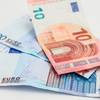 Where can I exchange money?
Where can I exchange money?
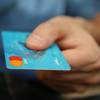 Can I use a debit or a credit card?
Can I use a debit or a credit card?
 How do I use ATMs in Germany?
How do I use ATMs in Germany?
 Is Germany expensive?
Is Germany expensive?
 How do I save money on my trip to Germany?
How do I save money on my trip to Germany?
 What is the currency in Germany?
What is the currency in Germany?
 Am I expected to tip in Germany?
Am I expected to tip in Germany?
Safety & Health
Family travel
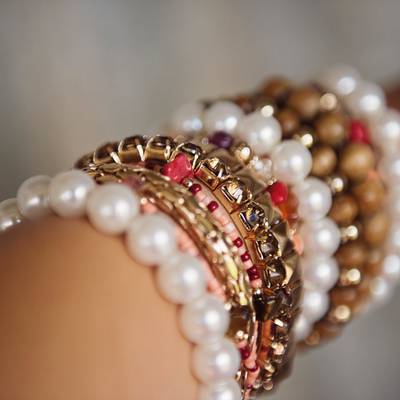
What can I bring home from Germany?
A great souvenir is one that helps you remember your trip, or impresses your friends back at home enough that they will happily agree to watch your cat again on your next vacation – or both. Of course, the biggest challenges when choosing a souvenir is making good use of your last remaining euros and correctly estimating the empty space in your suitcase. Here are some ideas you might keep an eye out for during your holiday in Germany.
Christmas ornaments. No one does Christmas like the Germans. A cosy, candle-lit family celebration that eventually morphed, thanks to assists from Tin Pan Alley and Coca-Cola, into the holiday festival America knows and loves today. Germany has since recognised its outsized influence on this most nostalgic of holidays and now sells tangible Christmas cheer to tourists at every possible opportunity. Christmas markets are the best place to pick up carved wooden ornaments, high art crêche figurines and that windmill that turns because of candles. If it is important that the piece is made in Germany, be prepared to dig deep. Most of the cheaper ornaments come from China.
A bit of the Berlin Wall. The 155-kilometre Berlin Wall is the souvenir that keeps on giving. How can you tell if your little baggie is full of legit pieces of the wall and not a little bit of the neighbour’s graffitied basement? Does it really matter? The Berlin Wall Memorial sells bits with a certificate of authenticity, but the best option is to hack off a chunk yourself with tools provided by the Westin Hotel.
Ampelmännchen. An iconic symbol of East Germany invented by psychologist Karl Peglau, the Ampelmännchen (Little Light Men) has become a hot souvenir item in Berlin. After unification, the little guys were due to get the axe and be replaced by the less charming Western image. Designer Markus Heckhausen stepped in to save the day, and now tourists the world over can enjoy sunglasses, shot glasses, ice cube trays, chalkboards and even pasta, which all bear the mark or even come in the shape of this intrepid little street crosser. Visit the Ampelmännchen shop near Konzerthaus Berlin or order online.
Beer steins. They’re hideous and impractical, but nothing says Germany quite like a beer stein – maybe a cuckoo clock, but they are expensive and fragile as well. A great buy for uncles or fathers-in-law, choose from stone, porcelain, glass or pewter, with a lid or without. The Silver Bullet never knew such style.
Cuckoo Clocks. Although commonly attributed to Switzerland, the Cuckoo clock hails from the Black Forest region – a forested area in the southwest corner of the country – and is among Germany’s most coveted souvenirs. Cuckoo clocks range in style and quality but the basic design has remained largely unchanged for the last 300 years with intricate designs featuring wild animals, hunting scenes or family gatherings. Most notably, the clocks come equipped with a “cuckoo” call. Often spotted at the fancy end of a German Christmas market, these authentic timepieces are worth their price tag.
Sauerkraut juice. It looks gross on the box, and it tastes gross in your mouth, but many Germans swear by sauerkraut juice as a cure for what ails you, particularly stomach complaints. Supposedly, there is something about the milk and vinegar mixing together with your stomach acid to calm the roiling down. It’s available at any grocery store.
Dirndl and/or Lederhosen. While this souvenir is an obvious one, it’s not budget-friendly. Lederhosen for men (and sometimes women) and dirndls for women (and, why not, sometimes men too) are the traditional clothing in Bavaria, the state in the south of Germany that touches the Alps and includes Munich. Beautiful silk dirndls start at about 800 EUR, and a quality pair of deer leather lederhosen go for at least 400 EUR. A warning: Lederhosen are never washed, instead kept soft by the wearer’s natural oils, which is something to bear in mind when you spy a pair at a second-hand shop.
Chocolate. German chocolate ranks with Swiss and Belgian chocolate as the finest in the world. In fact, Germany is a nation of chocoholics, with the second highest annual chocolate consumption in the world (just slightly behind Switzerland). Cologne is often regarded as the chocolate capital of Germany and is home to the Stollwerck Chocolate Company and the legendary Chocolate Museum. If you’re in Berlin, Fassbender & Rausch Chocolatiers at the Gendarmenmarkt is considered one of the city’s oldest chocolate shops and has more than 200 different varieties at the Rausch chocolate house. And then there’s Ritter Sport, a world famous chocolate brand. There are special shops in Berlin and Waldenbuch that host workshops where you can make your own flavor of Ritter Sport!
German Gummy Bears. If chocolate isn’t your thing, don’t worry. There are plenty of chocolate-free treats for you, too, including the iconic “dancing” gummy bears. German entrepreneur, Hans Riegel invented gummy bears way back in ‘20s when he started his candy company, Haribo. Today, these baby bears are consumed in mass all around the world. Just a 30-minute drive from Cologne Chocolate Museum is Bonn’s Haribo factory outlet where aisle after aisle is stocked with colourful treats. Other outlets can be found in Solingen, Neuss, Wilkau-Hasslau and Montabaur.
Egg Liqueur. Eierliköer is German egg liqueur, which is similar in texture to eggnog, but so much tastier. This creamy beverage is an easter and Christmas classic – made by combining egg yolks, spices, sugar and a dark spirit of your choice, like brandy or rum. Sold in supermarkets in Germany throughout the year, and a favourite at Christmas markets, Eierliköer can be served straight up or drizzled on homemade cakes custards and tortes.

What are the restrictions regarding alcohol consumption?

What are some places to eat?
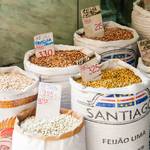
How much does the food cost?
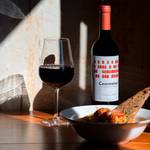
Where to buy alcohol in Germany and how much does it cost?

What am I allowed to export from Germany?
